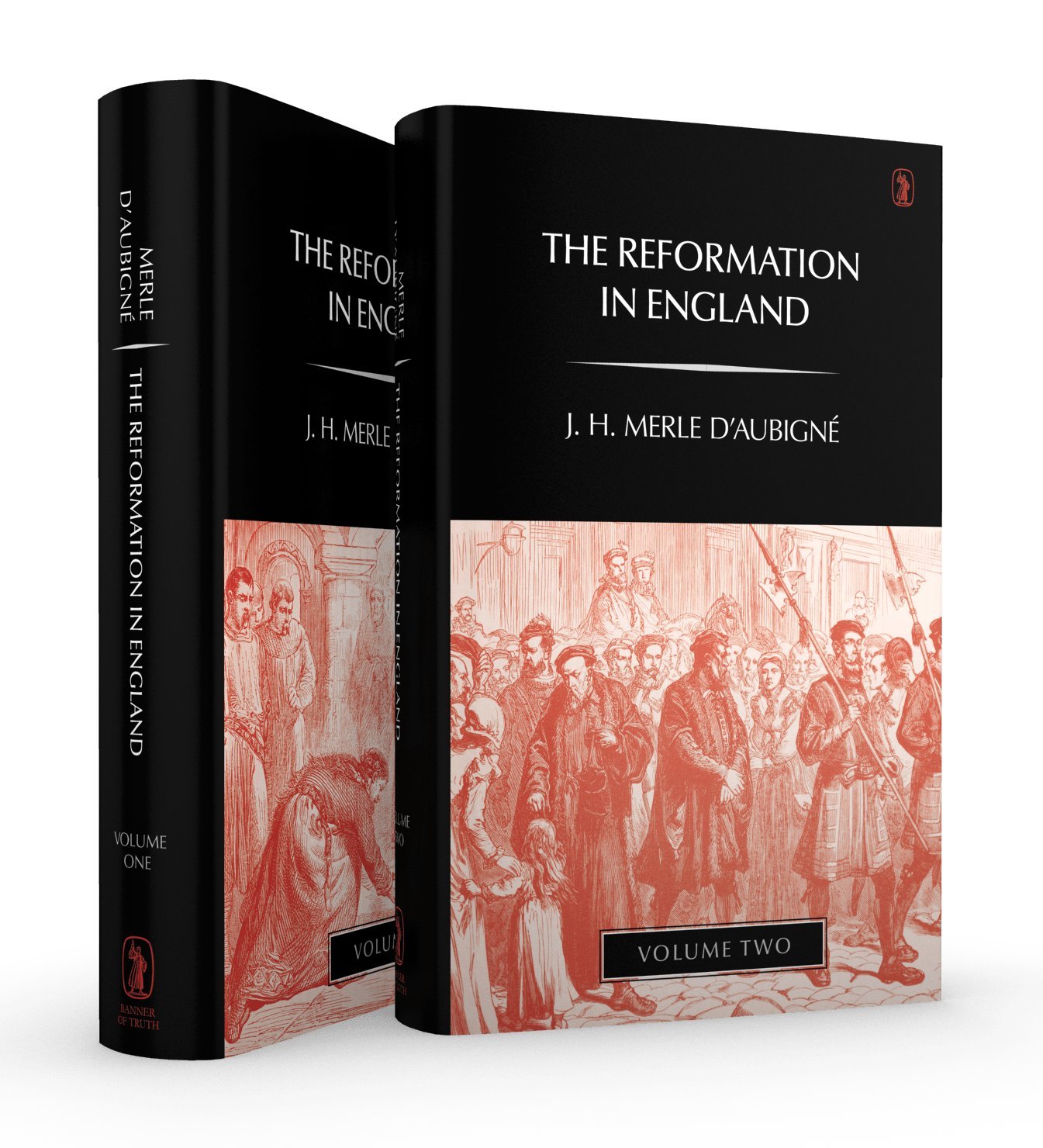Reviewed by Andre Gazal
I first encountered the two-volume edition of J.H. Merle D’Augbine’s (1794-1872) Reformation in England published by Banner of Truth when I was in seminary. As I write this review from my desk, I can still see my well-worn paperback edition which served me well in introducing me to the colorful, exciting, and complex story of the English Reformation. Banner of Truth has issued a deluxe hard-bound edition of this work, which has, and continues to edify countless Christian readers.
The Reformation in England is a compilation of sections extracted from D’Aubigne’s two multi-volume works, The History of the Reformation in the Sixteenth Century (1835-53), and The History of the Reformation in Europe in the Time of Calvin (1863-78). Originally edited by S.M. Houghton, Banner of Truth first published this work in 1962.
The Reformation in England relates the narrative of the English Reformation from the alleged pre-reformatory work John Wycliffe in the second half of the fourteenth century to the death of Henry VIII in 1547. Following an overview of the Pre-Reformation period in Part I, ranging from the earliest Christian mission in England to the work of Erasmus, D’Aubigne begins the Reformation period by calling attention to the corruption in the church and society, highlighting the need for reform. Relying mostly on John Foxe’s (1516-87) Acts and Monuments, D’Augbine depicts the Reformation as having been initially a cynical political maneuver prompted by Henry VIII, executed by his vicegerent of spiritual affairs, Thomas Cromwell (1485-1540), enacted by the Reformation Parliament. Throughout his account the author identifies the work of William Tyndale as the real beginning of the Reformation as he sacrificially produced the first English New Testament translated directly from Greek. Meanwhile D’Augbine speaks of Archbishop Thomas Cranmer as being a passive figure who only implements the will of the king.
D’Aubigne recounts the history of the English Reformation by means of lively and vivid prose so that it reads like an adventure story which draws the reader into the plot making him/her an eye witness to the adventures of William Tyndale on the Continent as he is constantly running from one city to another not only for the sake of his life, but more importantly, to save his English translations of the Scriptures from being eradicated by opposing authorities. In this regard, we who write history today can learn much from this approach in making our subject matter accessible to an audience other than specialist scholars.
While D’Aubigne’s work reads like outstanding literature, it falls short of the characteristic of a scholarly monograph used in modern research. In addition to its anecdotal style, The Reformation in England, recycling material from Foxe, makes assertions that present scholarship has long discredited. For instance, the author characterizes the Henrician Reformation as a purely political program divorced from any theological considerations with the intention of establishing a Catholic Church in England without a Pope. This view has been successfully answered by the work of J.J Scarisbrick and G.W. Bernard which has shown that, on the contrary, the reform pursued by Henry VIII was indeed theologically driven at least in part. Moreover, the research of Christopher Hague and Eamon Duffy has demonstrated that the late medieval church in England was necessarily as corrupt. Finally, even though Houghton added footnotes to various places in this work, the publisher has not added any information reflecting current scholarship which adds to the limitations of it as scholarly resource.
D’Augbine’s The Reformation in England ultimately functions as a prime witness to nineteenth-century assessments of the Reformation as well as a dynamic primer to the story for the general reader.
Andre A. Gazal
University of Northwestern Ohio
North Greenville University
Nicolet Bible Institute
Buy the books

The Reformation in England